Remember the old-style barbershops with the swirling pole of red, white, and blue? These days, some barbershops are still a place to chat with neighbors while you wait for your trim, while updated versions offer services that turn a men’s haircut into a spa experience. If you’re a friendly hair-cutting expert, you could open a barbershop that echoes your personal style and vision.
Starting any kind of business, however, takes a lot of work. The key is to gain the necessary knowledge and move patiently through the business development and launch process. By taking it step by step, as detailed below, you’ll avoid many of the more common mistakes.
LivePlan can easily write a top-notch business plan for you.
Step 1: Decide if the Business Is Right for You
Starting a barbershop, like starting any kind of business, requires considerable time and effort. It’s a good idea to learn all you can before deciding whether a barbershop is right for you. You will be taking a significant risk, so educating yourself is critical before jumping in.
Pros and cons
Every business has advantages and disadvantages you should weigh before moving forward. Here are some basic pros and cons of starting and running a barbershop.
Pros
- Networking – You will get to know a lot of people
- Customer retention – People tend to go to one place for their haircuts
- Steady income – Once you’re established, income should be fairly predictable
- Simplicity – Until the whole world goes bald, cutting hair is a reliable business model
Cons
- Competition – Most neighborhoods already have a barbershop or two.
- Startup Costs – Marketing is necessary to build a customer base
- Patience – Building name recognition takes time
Barbershop industry trends
Barbershops are introducing additional products and services to potentially increase revenue further.
Industry size and growth
Trends and challenges
Barbershop trends include:
- Bespoke, spa-like shops with costlier cuts and additional products and services like head massages and hair tonics
- Some fancy new barbershops offer alcoholic beverages, selling the haircut as a social event
- Mobile barbers, like a doctor that makes house calls but with scissors instead of a stethoscope((https://www.mobilesalon.com/blog/entry/1547783150-what-is-a-mobile-barber))
Challenges in the barbershop industry include:
- Lack of skilled and professional barbers
- Risk of accidents and misunderstandings with customers
What kind of people work in barbershops?
How much does it cost to start a barbershop?
Barbershop startup costs range from $28,900 to $66,800, according to Step By Step Research, with the average cost around $45,000. This total includes the cost of barber school, so if you’re already a trained barber the total will be lower.
You’ll need a handful of different items to successfully launch a barbershop. Here’s a list to get you started:
- Barber chairs and additional seating for waiting customers
- Scissors, trimmers, other hair-cutting and styling equipment
- Cash register, cleaning supplies
| Startup Costs | Ballpark Range | Average |
| Setting up a business name and corporation | $200 - $200 | $200 |
| Business licenses and permits | $200 - $300 | $250 |
| Insurance | $100 - $500 | $300 |
| Business cards and brochures | $200 - $300 | $250 |
| Website setup | $1,000 - $3,000 | $2,000 |
| Initial marketing budget | $200 - $500 | $350 |
| Barber school | $5,000 - $10,000 | $7,500 |
| Space rental deposit or down payment | $2,000 - $12,000 | $7,000 |
| Scissors, trimmers, other supplies | $2,000 - $4,000 | $3,000 |
| Inventory of shampoos, skin care products, shaving cream | $1,000 - $3,000 | $2,000 |
| Furniture, other shop preparation, cash register | $15,000 - $30,000 | $22,500 |
| Scheduling software | $2,000 - $3,000 | $2,500 |
| Total | $28,900 - $66,800 | $47,850 |
How much can you earn from a barbershop?
Profits will vary depending on the number and type of customers you’re able to attract, and your expenses, particularly employee expenses.
The Professional Beauty Association estimates that, in the US, a men’s haircut costs an average of $28, with the barber getting anywhere from 30-70% of that. Monthly expenses include rent, insurance, utilities, marketing, and supplies, and usually come to $2500-$5000.
If your shop has six chairs, each of which sees 10 $28 haircuts per day, six days a week, your annual revenue is $525,000. But you have barbers who take half of every haircut payment and $4000 per month in expenses, so your net profit is about $215,000. Not a bad year.
As you gain recognition and referrals, you could see 15 daily haircuts per chair (at 40 minutes each, that would be 10 hours). Even if your monthly expenses increase to $5000, you will be making over $785,000 in annual revenue and more than $330,000 in profit.
What barriers to entry are there?
There are very few barriers to entry for a barbershop. Your biggest challenges will be:
- Standing out from the competition, likely via branding and expertise
- Time and money required to market your business at launch
- Barber training, cost of finding and hiring experienced barbers
Related Business Ideas
If you’re still not sure whether this business idea is the right choice for you, here are some related business opportunities to help you on your path to entrepreneurial success.
Step 2: Hone Your Idea
Now that you know what’s involved in starting a barbershop, it’s a good idea to hone your concept in preparation to enter a competitive market.
Why? Identify an opportunity
Since you have no track record in the business, you’ll have to find another way to stand out from the competition.
Research barbershops in your area and see which type of shops, services, and products are the most popular.
Examine the concepts of the shops, their brand sensibilities, and consider how you might make your barbershop unique. You may want to avoid choosing a concept similar to the successful barbershop just down the street. Or maybe you think you can do it better.
What? Determine your products or services
After you settle on a concept, choose the services that fit best within that brand, and create a service menu. Along with men’s haircuts, you could potentially offer:
- Children’s haircuts
- Shaves and beard sculpting
- Facials of various types
- Scalp massage and conditioning
- Hair color and grey coverup
How much should you charge for services?
Whether you’re planning a no-frills shop or a high-end, spa-like experience, you could offer discount prices at launch in order to draw customers and build your reputation. Either way, it’s a good idea to research barbershops in your area to familiarize yourself with local pricing.
Men’s haircut prices range from $10 – $100 with an average price in the United States of $28. The price you charge should be in line with your concept. If you are offering a high-end haircut experience, you should be able to charge a higher price. You still need to be aware, however, of the competition so that you don’t price yourself out of the market.
Once you know your costs, you can use this Step By Step profit margin calculator to determine your mark-up and final price points. Remember, the prices you use at launch should be subject to change if warranted by the market.
Who? Identify your target market
Your target market will depend on your concept. A bespoke shop will probably attract a younger, hipper clientele, while an old-fashioned concept is likely to pull in an older crowd. From there you can choose the best places to reach these demographics with your marketing.
Once you’re up and running, word-of-mouth referrals and repeat clients will be your main source of business.
Where? Choose your business premises
The location of your barbershop is critical, and should relate to your concept. For example, you probably wouldn’t want to put your high-end shop next to a senior citizens’ residence. Choosing an area with steady foot traffic is also a good idea. You can find commercial space to rent in your area on sites such as Craigslist, Crexi, and Instant Offices.
When choosing a commercial space, you may want to follow these four rules of thumb:
- Central location accessible via public transport
- Spacious, well-lit space in a high foot-traffic area
- Flexible lease that can be extended as your business grows
- Ready-to-use space with no major renovations or repairs needed
Step 3: Brainstorm a Business Name
Your business name is your business identity, so choose one that encapsulates your objectives, services, and mission in just a few words. You probably want a name that’s short and easy to remember, since much of your business, and your initial business in particular, will come from word-of-mouth referrals.
Here are some suggestions for brainstorming your business name:
- Short, unique, and catchy names tend to stand out
- Names that are easy to say and spell tend to do better
- The name should be relevant to your product or service offerings
- Ask around — family, friends, colleagues, social media — for suggestions
- Including keywords in the name, such as “barber” or “hair”, boosts SEO
- Choose a name that allows for expansion: “Jim’s Bakery” rather than “Jim’s Cookies”
- Avoid location-based names that might hinder future expansion
- Use online tools like the Step by Step business name generator. Just type in a few keywords and hit “generate” and you’ll have dozens of suggestions at your fingertips.
Once you’ve got a list of potential names, visit the website of the US Patent and Trademark Office to make sure they are available for registration and check the availability of related domain names using our Domain Name Search tool. Using “.com” or “.org” sharply increases credibility, so it’s best to focus on these.
Finally, make your choice among the names that pass this screening and go ahead with domain registration and social media account creation. Your business name is one of the key differentiators that set your business apart. Once you pick your company name, and start with the branding, it is hard to change the business name. Therefore, it’s important to carefully consider your choice before you start a business entity.
Step 4: Create a Business Plan
Every business needs a plan. This will function as a guidebook to take your startup through the launch process and maintain focus on your key goals. A business plan also enables potential partners and investors to better understand your company and its vision:
- Executive Summary: Brief overview of the entire business plan; should be written after the plan is complete.
- Business Overview: Overview of the company, vision, mission, ownership, and corporate goals.
- Product and Services: Describe your shop’s services in detail.
- Market Analysis: Assess market trends such as variations in demand and prospects for growth, and do a SWOT analysis.
- Competitive Analysis: Analyze main competitors, assess their strengths and weaknesses, and create a list of the advantages of your services.
- Sales and Marketing: Examine your companies’ unique selling propositions (USPs) and develop sales, marketing, and promotional strategies.
- Management Team: Overview of management team, detailing their roles and professional background, along with a corporate hierarchy.
- Operations Plan: Your company’s operational plan includes procurement, office location, key assets and equipment, and other logistical details.
- Financial Plan: Three years of financial planning, including startup costs, break-even analysis, profit and loss estimates, cash flow, and balance sheet.
- Appendix: Include any additional financial or business-related documents
If you’ve never created a business plan, it can be an intimidating task. You might consider hiring a business plan specialist at Fiverr to create a top-notch business plan for you.
Step 5: Register Your Business
Registering your business is an absolutely crucial step — it’s the prerequisite to paying taxes, raising capital, opening a bank account, and other guideposts on the road to getting a business up and running.
Plus, registration is exciting because it makes the entire process official. Once it’s complete, you’ll have your own business!
Choose where to register your company
Your business location is important because it can affect taxes, legal requirements, and revenue. Most people will register their business in the state where they live, but if you are planning to expand, you might consider looking elsewhere, as some states could offer real advantages when it comes to barbershops.
If you’re willing to move, you could really maximize your business! Keep in mind, it’s relatively easy to transfer your business to another state.
Choose your business structure
Business entities come in several varieties, each with its pros and cons. The legal structure you choose for your barbershop will shape your taxes, personal liability, and business registration requirements, so choose wisely.
Here are the main options:
- Sole Proprietorship – The most common structure for small businesses makes no legal distinction between company and owner. All income goes to the owner, who’s also liable for any debts, losses, or liabilities incurred by the business. The owner pays taxes on business income on his or her personal tax return.
- General Partnership – Similar to a sole proprietorship, but for two or more people. Again, owners keep the profits and are liable for losses. The partners pay taxes on their share of business income on their personal tax returns.
- Limited Liability Company (LLC) – Combines the characteristics of corporations with those of sole proprietorships or partnerships. Again, the owners are not personally liable for debts.
- C Corp – Under this structure, the business is a distinct legal entity and the owner or owners are not personally liable for its debts. Owners take profits through shareholder dividends, rather than directly. The corporation pays taxes, and owners pay taxes on their dividends, which is sometimes referred to as double taxation.
- S Corp – An S-Corporation refers to the tax classification of the business but is not a business entity. An S-Corp can be either a corporation or an LLC, which just need to elect to be an S-Corp for tax status. In an S-Corp, income is passed through directly to shareholders, who pay taxes on their share of business income on their personal tax returns.
We recommend that new business owners choose LLC as it offers liability protection and pass-through taxation while being simpler to form than a corporation. You can form an LLC in as little as five minutes using ZenBusiness’s online LLC formation service. They will check that your business name is available before filing, submit your Articles of Organization, and answer any questions you might have.
Step 6: Register for Taxes
The final step before you’re able to pay taxes is getting an Employer Identification Number, or EIN. You can file for your EIN online or by mail or fax: visit the IRS website to learn more. Keep in mind, if you’ve chosen to be a sole proprietorship you can simply use your social security number as your EIN.
Once you have your EIN, you’ll need to choose your tax year. Financially speaking, your business will operate on a calendar year (January–December), or a fiscal year, a 12-month period that can start in any month. This will determine your tax cycle, while your business structure will determine which taxes you’ll pay.
It is important to consult an accountant or other professional to help you with your taxes to ensure you are completing them correctly.
Step 7: Fund your Business
Securing financing is your next step and there are plenty of ways to raise capital:
- Bank loans: This is the most common method, but getting approved requires a rock-solid business plan and strong credit history.
- SBA-guaranteed loans: The Small Business Administration can act as guarantor, helping gain that elusive bank approval via an SBA-guaranteed loan.
- Government grants: A handful of financial assistance programs help fund entrepreneurs. Visit Grants.gov to learn which might work for you.
- Venture capital: Offer potential investors an ownership stake in exchange for funds, keeping in mind that you would be sacrificing some control over your business.
- Friends and Family: Reach out to friends and family to provide a business loan or investment in your concept. It’s a good idea to have legal advice when doing so because SEC regulations apply.
- Crowdfunding: Websites like Kickstarter and Indiegogo offer an increasingly popular low-risk option, in which donors fund your vision. Entrepreneurial crowdfunding sites like Fundable and WeFunder enable multiple investors to fund your business.
- Personal: Self-fund your business via your savings or the sale of property or other assets.
Bank and SBA loans are probably the best option, other than friends and family, for funding a barbershop. You might also try crowdfunding if you have an innovative concept.
Step 8: Apply for Licenses/Permits
Starting a barbershop requires obtaining a number of licenses and permits from local, state, and federal governments.
Federal regulations, licenses, and permits associated with starting your business include doing business as (DBA), health licenses and permits from the Occupational Safety and Health Administration (OSHA), trademarks, copyrights, patents, and other intellectual properties, as well as industry-specific licenses and permits.
You may also need state-level and local county or city-based licenses and permits. The license requirements and how to obtain them vary, so check the websites of your state, city, and county governments or contact the appropriate person to learn more.
You could also check this SBA guide for your state’s requirements, but we recommend using MyCorporation’s Business License Compliance Package. They will research the exact forms you need for your business and state and provide them to ensure you’re fully compliant.
This is not a step to be taken lightly, as failing to comply with legal requirements can result in hefty penalties.
If you feel overwhelmed by this step or don’t know how to begin, it might be a good idea to hire a professional to help you check all the legal boxes.
Step 9: Open a Business Bank Account
Before you start making money, you’ll need a place to keep it, and that requires opening a bank account.
Keeping your business finances separate from your personal account makes it easy to file taxes and track your company’s income, so it’s worth doing even if you’re running your barbershop as a sole proprietorship. Opening a business bank account is quite simple, and similar to opening a personal one. Most major banks offer accounts tailored for businesses — just inquire at your preferred bank to learn about their rates and features.
Banks vary in terms of offerings, so it’s a good idea to examine your options and select the best plan for you. Once you choose your bank, bring in your EIN (or Social Security Number if you decide on a sole proprietorship), articles of incorporation, and other legal documents and open your new account.
Step 10: Get Business Insurance
Business insurance is an area that often gets overlooked but is vital to your success as an entrepreneur. Insurance protects you from unexpected events that can have a devastating impact on your business.
Here are some types of insurance to consider:
- General liability: The most comprehensive type of insurance, acting as a catch-all for many business elements that require coverage. If you get just one kind of insurance, this is it. It even protects against bodily injury and property damage.
- Business Property: Provides coverage for your equipment and supplies.
- Equipment Breakdown Insurance: Covers the cost of replacing or repairing equipment that has broken due to mechanical issues.
- Worker’s compensation: Provides compensation to employees injured on the job.
- Property: Covers your physical space, whether it is a cart, storefront, or office.
- Commercial auto: Protection for your company-owned vehicle.
- Professional liability: Protects against claims from a client who says they suffered a loss due to an error or omission in your work.
- Business owner’s policy (BOP): This is an insurance plan that acts as an all-in-one insurance policy, a combination of any of the above insurance types.
Step 11: Prepare to Launch
As opening day nears, prepare for launch by reviewing and improving some key elements of your business.
Essential software and tools
Being an entrepreneur often means wearing many hats, from marketing to sales to accounting, which can be overwhelming. Fortunately, a number of websites and digital tools can help you with many business tasks.
Sites like Boulevard and Uzeli offer comprehensive solutions for barbershops including scheduling.
Accounting
- Popular web-based accounting programs for smaller businesses include Quickbooks, Freshbooks, and Xero.
- If you are unfamiliar with basic accounting, you may want to hire a professional, especially as you begin. The consequences for filing incorrect tax documents can be harsh, so accuracy is crucial.
Marketing
Some of your business will come from the casual passerby or online visitors, but you should still invest in digital marketing! Getting the word out is especially important for new businesses, as it’ll boost customer and brand awareness.
Once your website is up and running, link it to your social media accounts and vice versa. Social media is a great tool for promoting your business because you can create engaging posts that advertise your products:
- Facebook: Great platform for paid advertising, allows you to target specific demographics, like men under age 50 in the Cleveland area.
- Instagram: Same benefits as Facebook but with different target audiences.
- Website: SEO will help your website appear closer to the top in relevant search results, a crucial element for increasing sales. Make sure that you optimize calls to action on your website. Experiment with text, color, size, and position of calls to action such as “Make an Appointment Now”. This can sharply increase bookings.
- Google and Yelp: For businesses that rely on local clientele, getting listed on Yelp and Google My Business can be crucial to generating awareness and customers.
Kickstart Marketing
Take advantage of your website, social media presence and real-life activities to increase awareness of your offerings and build your brand. Some suggestions include:
- Signage – Put up eye-catching signage at your store and website.
- Flyering – Distribute flyers in your neighborhood and at industry events.
- In-Person Sales – Offer your services at local markets and trade shows.
- Post a video – Post a video about your barbershop. Use humor and maybe it will go viral!
- Start a blog – Start a blog and post regularly. Change up your content and share it on multiple sites.
- Seek out referrals – Offer incentives to generate customer referrals to new clients.
- Paid ads on social media – Choose sites that will reach your target market and do targeted ads.
- Influencer marketing – Pay people with large social media followings to promote your barbershop. You can find micro-influencers with smaller followings and lower rates.
- Testimonials – Share customer testimonials about how your services helped them.
- Create infographics – Post infographics and include them in your content.
Develop your website
Website development is crucial because your site is your online presence and needs to convince prospective clients of your expertise and professionalism. They are unlikely to find your website, however, unless you follow Search Engine Optimization (SEO) practices. These are steps that help pages rank higher in the results of top search engines like Google.
You can create your own website using services like WordPress, Wix, or Squarespace. This route is very affordable, but figuring out how to build a website can be time-consuming. If you lack tech-savvy, you can hire a web designer or developer to create a custom website for your business.
Focus on USPs
Unique selling propositions, or USPs, are the characteristics of a product or service that sets it apart from the competition. Customers today are inundated with buying options, so you’ll have a real advantage if they are able to quickly grasp how your barbershop meets their needs or wishes. It’s wise to do all you can to ensure your USPs stand out on your website and in your marketing and promotional materials, stimulating buyer desire.
Global pizza chain Domino’s is renowned for its USP: “Hot pizza in 30 minutes or less, guaranteed.” Signature USPs for your barbershop could be:
- Go against the grain and market yourself as a no-frills, value-based barbershop
- Offer the spa experience, with special high-end services
- Package your services, such as a haircut, shave, and facial purchased together
- Stay open late to attract the party-going crowd
- Exceptional service – do all you can to make customers feel at home
Networking
You may not like to network or use personal connections for business gain. But your personal and professional networks likely offer considerable untapped business potential. Maybe that Facebook friend you met in college is now running a barbershop, or a LinkedIn contact of yours is connected to dozens of potential clients. Maybe your cousin or neighbor has been working in barbershops for years and can offer invaluable insight and industry connections.
The possibilities are endless, so it’s a good idea to review your personal and professional networks and reach out to those with possible links to or interest in hair care. You’ll probably generate new customers or find companies with which you could establish a partnership. Online businesses might also consider affiliate marketing as a way to build relationships with potential partners and boost business.
Step 12: Build Your Team
Even prior to launch, you may need to recruit full-time employees for your shop, such as:
- Barbers – provide haircuts and additional services
- Receptionist – schedule appointments, engage customers
- Marketing Lead – SEO, social media marketing
At some point, you may need to hire all of these positions or simply a few, depending on the size and needs of your business. You might also hire multiple workers for a single role or a single worker for multiple roles, again depending on need.
Free-of-charge methods to recruit employees include posting ads on popular platforms such as LinkedIn, Facebook, or Jobs.com. You might also consider a premium recruitment option, such as advertising on Indeed, Glassdoor, or ZipRecruiter. Further, if you have the resources, you could consider hiring a recruitment agency to help you find talent.
Step 13: Start Making Money!
Survey says the most significant beauty expenses of Americans go to haircuts and facial skin care.((https://www.salontoday.com/1082057/new-study-evaluates-american-spending-on-beauty-fitness-and-wellness)) That means there’ll always be a need for barber services. The challenge is differentiating yourself from the competition and retaining your customers while developing new leads. You can do that by keeping your barbershop up to date with the latest trends and providing additional services for a holistic personal care package.
Now that you know how to open a barbershop, you’re ready to start your entrepreneurial journey. With proper research and brilliant marketing strategies, your barbershop is well on its way to success!
Barbershop FAQs
How much does it cost to open a barbershop?
Startup costs for a barbershop range from $28,900 to $66,800. That includes the cost of barber school, so if you’re already a trained barber, your costs will be less.
How much does a barbershop owner make a year?
A successful barbershop can make up to $300,000 in annual profit, but it takes time, money, and a good concept to get to that level, not to mention hard work.
Is it hard to start a barbershop?
Every business has its challenges. But if you have capital, the right location, and a strong concept, you can make your barbershop stand out. Once you’re established, running the shop is a snap.


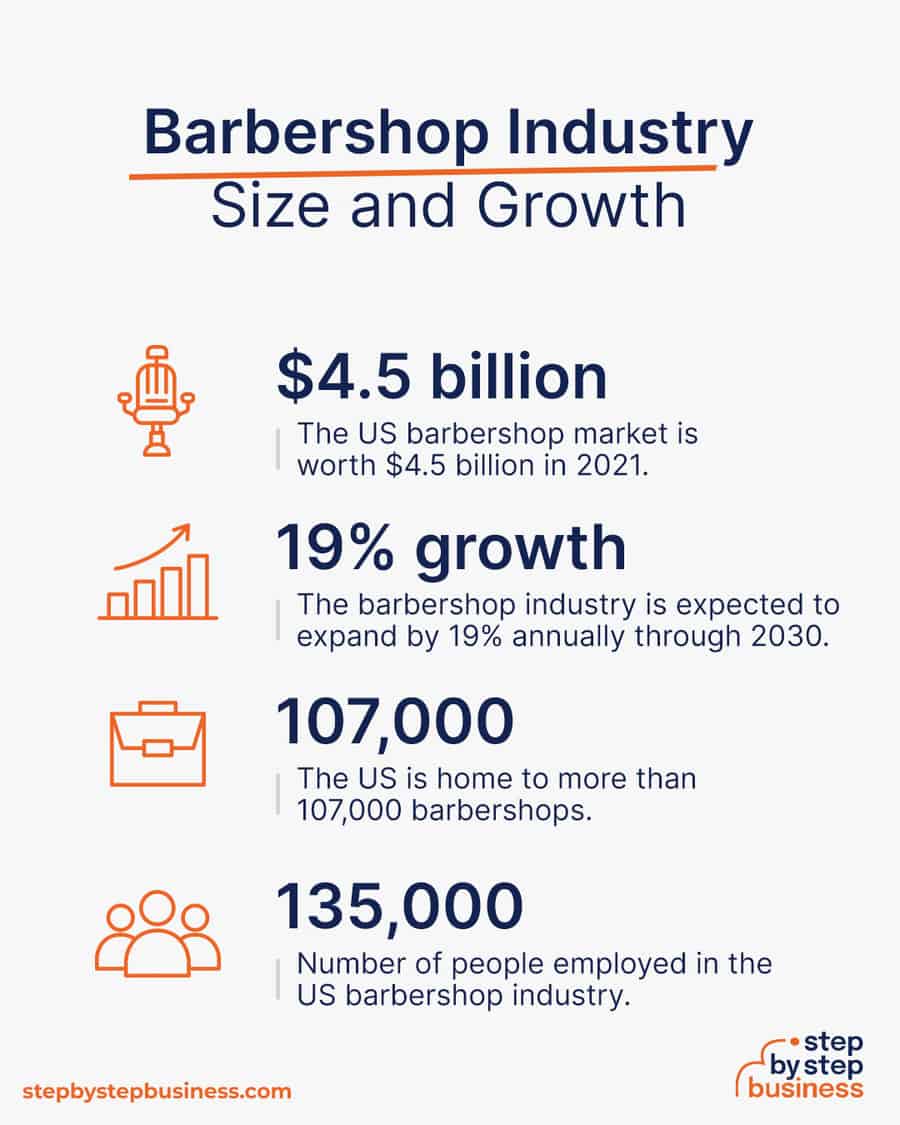
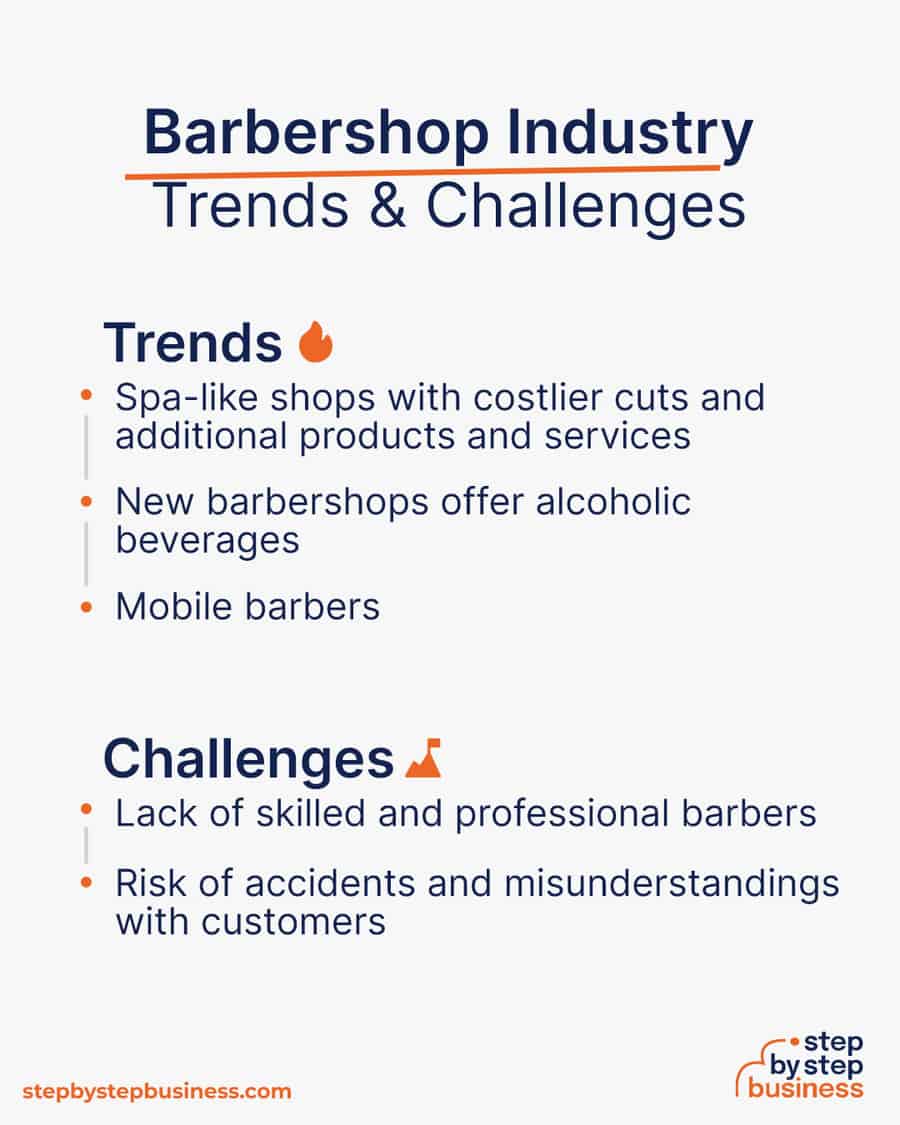
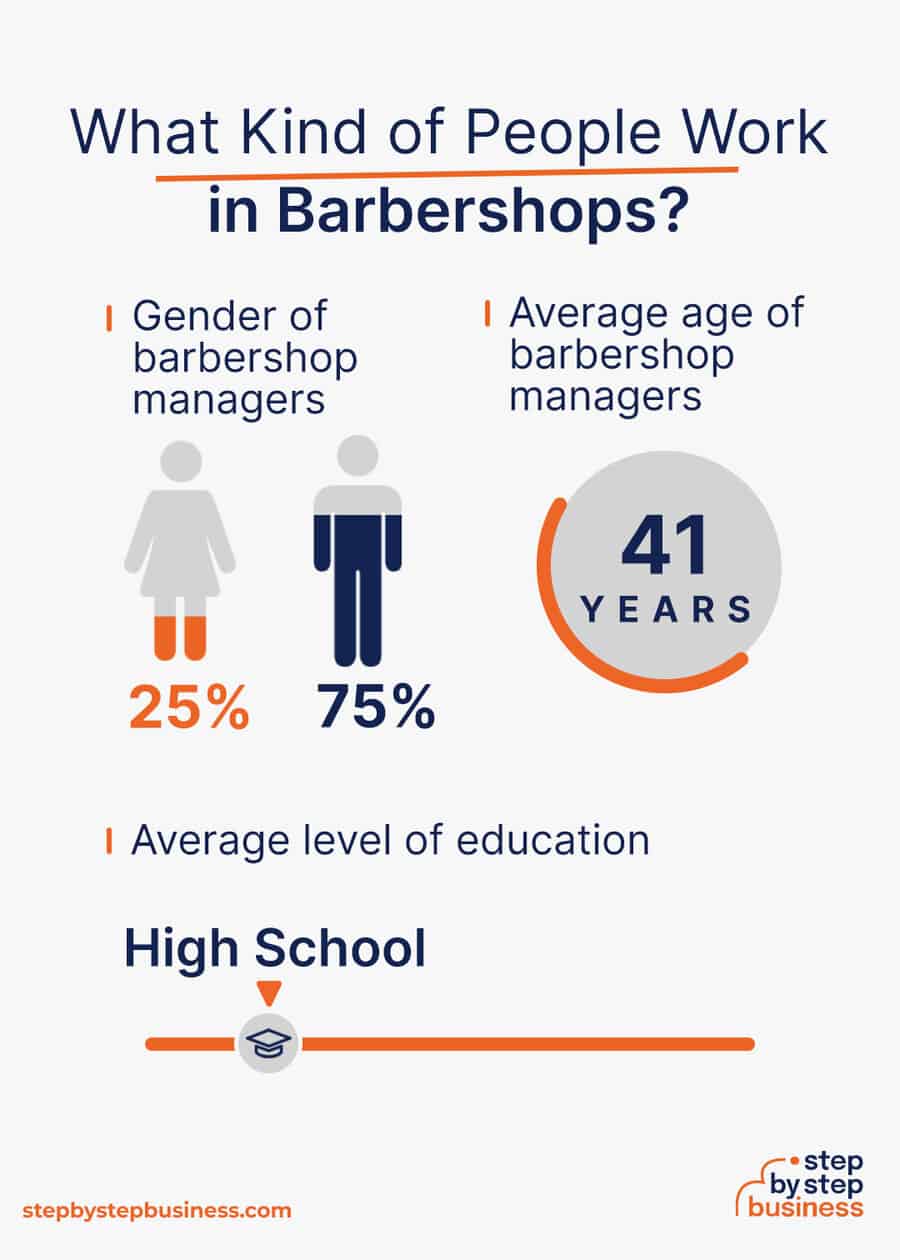
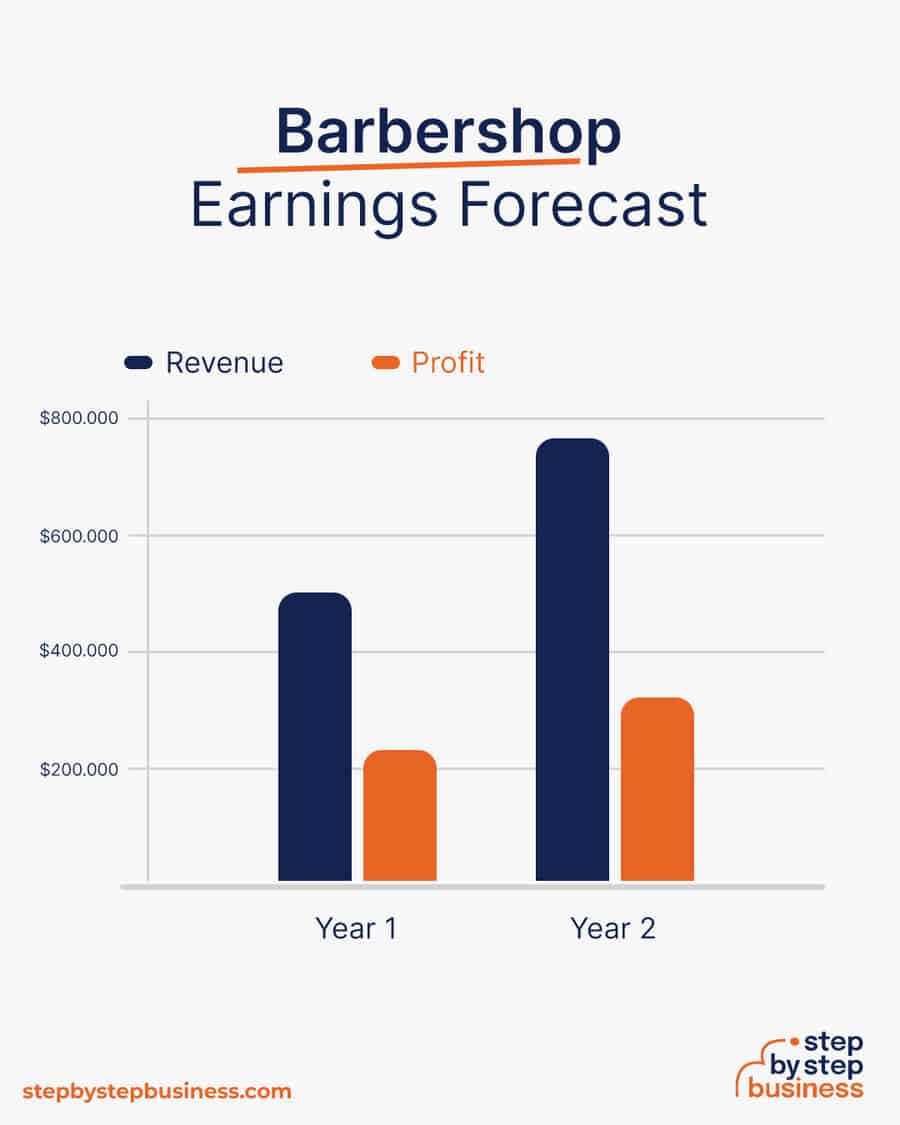


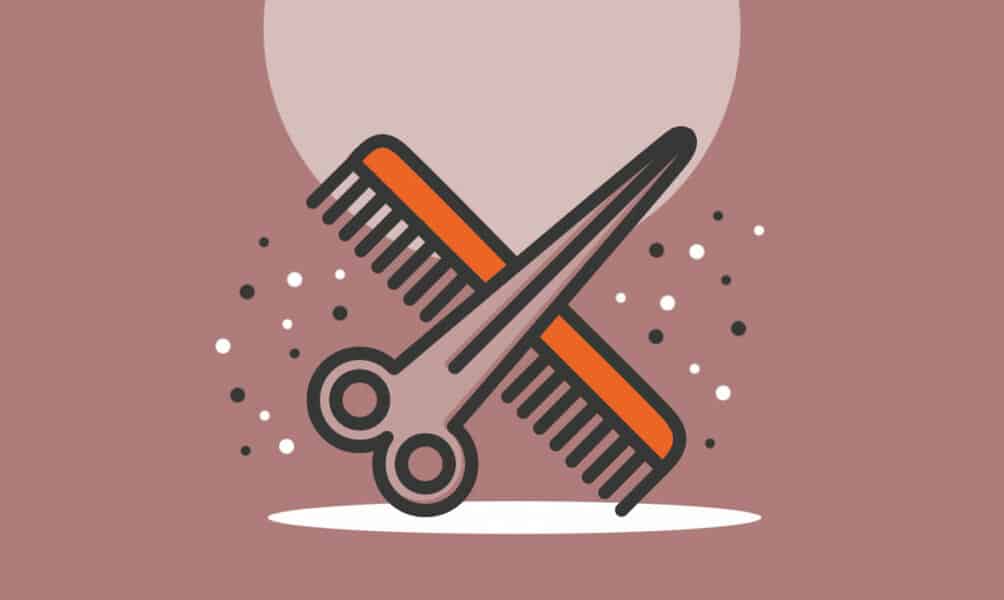

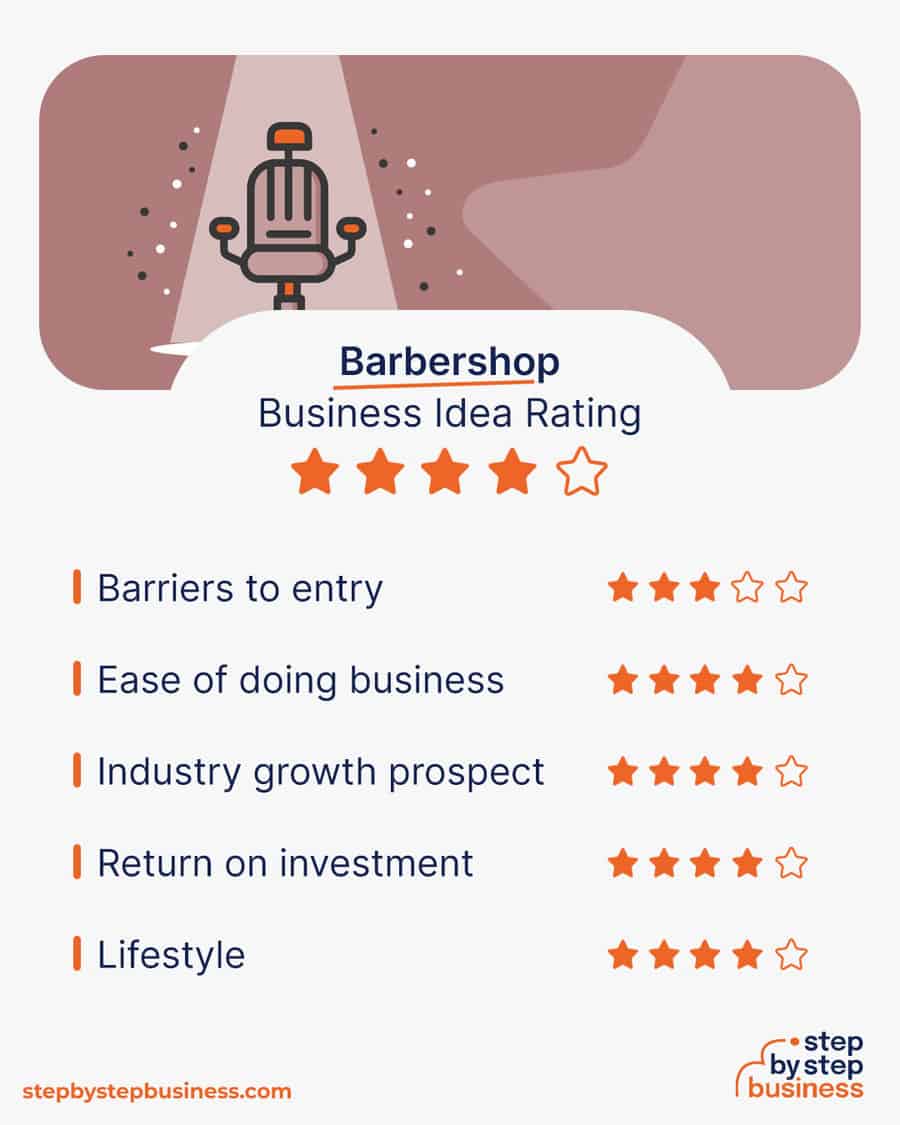










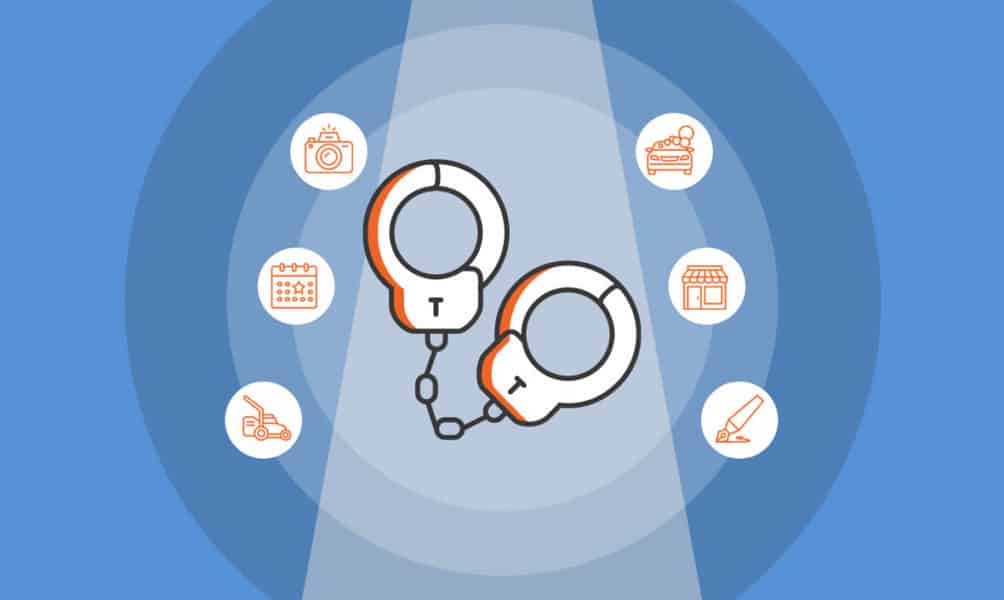

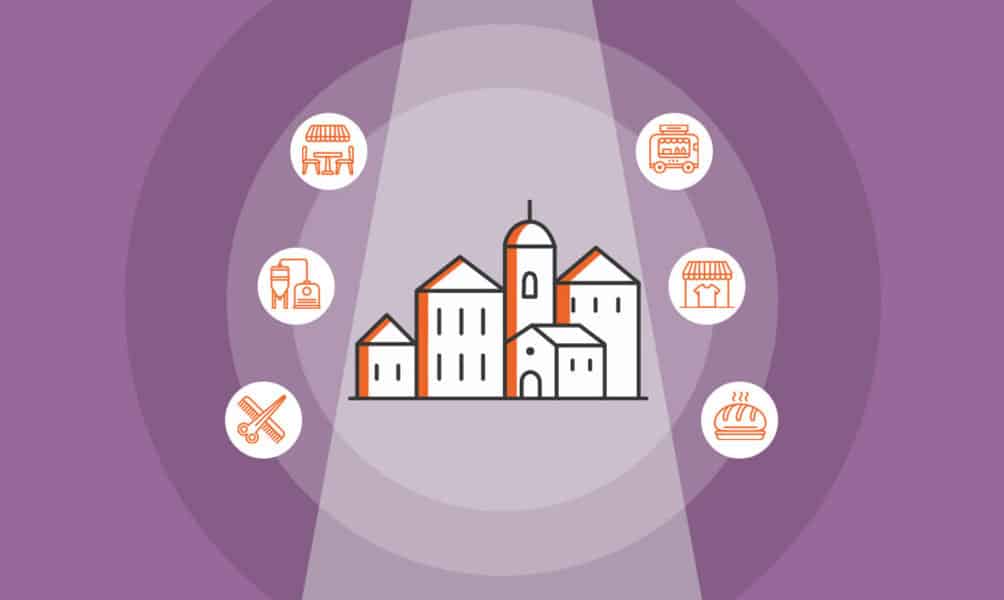
Comments